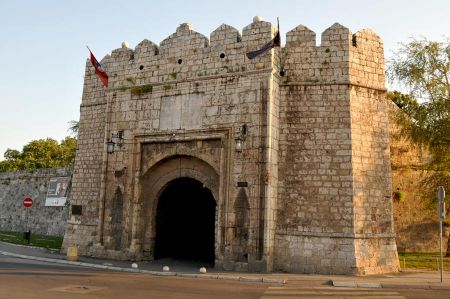Niš in Serbia – historic city on the Nišava
- Written by Portal Editor
Once again traveling on the highway from Izmir towards Augsburg, we chose the second largest city in Serbia, Niš on the Nišava, for this time's overnight stopover during the approximately 2,400-kilometer-long journey.
With its approximately 257,000 inhabitants, museums, theatres, university and other cultural institutions as well as its commercial and industrial facilities, Niš offers the lively image of a thriving medium-sized centre about 250 kilometres from the gates of Belgrade.
Traces of settlement far into the past
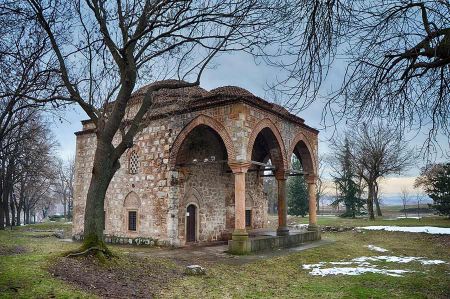 From Skopje in Macedonia we followed the route of European Route 5, which is now partly designated E75 and partly E80 and in many sections corresponds to the former route of the strategic Roman road Via Militaris. Excavations in Niš revealed the first settlements in the region from around 6,000 BC. When advancing Celts drove the settled Illyrians from here on their expansion and raids in the 3rd century BC, the Celts founded their first settlement, which was called Navissos.
From Skopje in Macedonia we followed the route of European Route 5, which is now partly designated E75 and partly E80 and in many sections corresponds to the former route of the strategic Roman road Via Militaris. Excavations in Niš revealed the first settlements in the region from around 6,000 BC. When advancing Celts drove the settled Illyrians from here on their expansion and raids in the 3rd century BC, the Celts founded their first settlement, which was called Navissos.
Just a little later the advancing Romans conquered the Celtic settlement of Navissos and so, on Roman orders, the name was changed to Naissus around 75 BC.
Romans conquer the Celtic settlement of Navissos
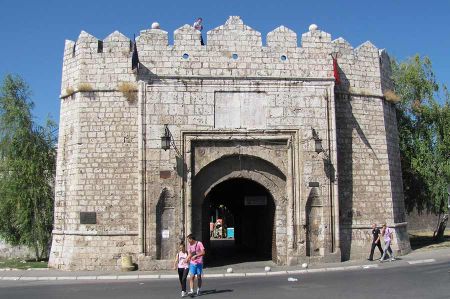 As usual, the Romans also built their camp fortifications here, which in Naissus were probably among the most impressive forts in the entire Balkans. With the rapid expansion of the Via Militaris road, the importance of the garrison town of Naissus also increased, which was also due to the boom in trade and crafts that accompanied the construction of the road. Now goods were easily transported from Constantinople via Adrianople - Philippopolis - Serdica - Naissus to Singidunum (today's Belgrade), well-guarded by the Roman soldiers in the forts along the Via Militaris.
As usual, the Romans also built their camp fortifications here, which in Naissus were probably among the most impressive forts in the entire Balkans. With the rapid expansion of the Via Militaris road, the importance of the garrison town of Naissus also increased, which was also due to the boom in trade and crafts that accompanied the construction of the road. Now goods were easily transported from Constantinople via Adrianople - Philippopolis - Serdica - Naissus to Singidunum (today's Belgrade), well-guarded by the Roman soldiers in the forts along the Via Militaris.
Around 280 AD, the later “Constantine the Great” was born in Naissus, the Roman emperor who significantly privileged Christianity in the empire and ultimately made it the state religion. After the beginning of the collapse of the Roman Empire, Naissus belonged to Byzantium from 395 AD. When the first Slavs settled in the region around 580 AD, the step of changing the name to Niš, which is still valid today, was only a small step. With the complete conquest of the city by Slavs and Avars, the rule of the Roman-Byzantine era in the Morava Valley was over for several centuries.
Emperor Barbarossa passes through Nis as a crusader
Tribes under the Khan Krum of Bulgaria were able to conquer Niš around the year 809. However, with the renewed takeover by Byzantium, this period ended again in 1018. The first Serbian regent, the Serbian Prince Stefan Nemanja, came into possession of the city of Niš in 1185. When Emperor Barbarossa travelled as a crusader just four years later along the Via Militaris to Constantinople and further towards Asia Minor, Stefan Nemanja received the emperor in Niš, his chosen capital. In the following years, the ruling structures mostly changed back and forth between the Bulgarians and the Serbs.
The Stambol Gate towards Istanbul
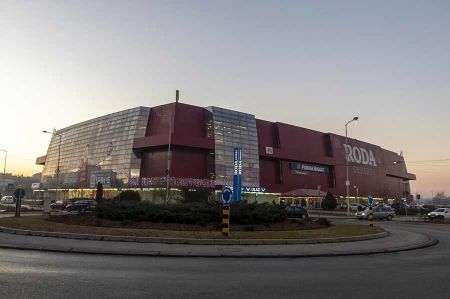 When the Ottomans conquered the city in 1385, a long phase of Ottoman building and rule structure began for Niš, which can still be seen today in numerous buildings, especially the fortress, but also in the language structure of the Serbs. The fortress complex was built in the early 18th century on the foundations of Roman and medieval buildings on the right bank of the Nišava as an irregular polygon. In addition to a large number of remains of former Roman buildings, monuments and sarcophagi, stones from the nearby Hum quarry were used for construction. Today, the four large city gates are still in good structural condition, with even the wooden gates still intact. Depending on the local orientation of the gate, the names indicate the respective destinations: the Stambol Gate in the direction of Istanbul, the Belgrade Gate and the Vidin Gate. Only the Great Gate is an exception to this. In earlier times, the entire fortress was also surrounded by a moat, which could be filled with water from the Nišava River if necessary.
When the Ottomans conquered the city in 1385, a long phase of Ottoman building and rule structure began for Niš, which can still be seen today in numerous buildings, especially the fortress, but also in the language structure of the Serbs. The fortress complex was built in the early 18th century on the foundations of Roman and medieval buildings on the right bank of the Nišava as an irregular polygon. In addition to a large number of remains of former Roman buildings, monuments and sarcophagi, stones from the nearby Hum quarry were used for construction. Today, the four large city gates are still in good structural condition, with even the wooden gates still intact. Depending on the local orientation of the gate, the names indicate the respective destinations: the Stambol Gate in the direction of Istanbul, the Belgrade Gate and the Vidin Gate. Only the Great Gate is an exception to this. In earlier times, the entire fortress was also surrounded by a moat, which could be filled with water from the Nišava River if necessary.
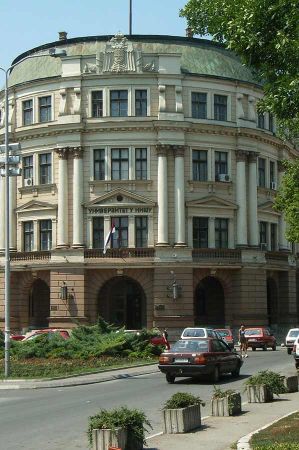 There were small settlements within the fortress walls for traders and craftsmen, as well as barracks for the soldiers, and of course there were also places of worship. The Bali-beg Mosque from the 16th century has been preserved to this day. A hammam from the 15th century, one of the oldest non-religious buildings, has also been preserved. Since it was of important strategic importance to the Ottomans, the fortress of Niš remained under Turkish control until 1877, despite Serbian dominance in the area.
There were small settlements within the fortress walls for traders and craftsmen, as well as barracks for the soldiers, and of course there were also places of worship. The Bali-beg Mosque from the 16th century has been preserved to this day. A hammam from the 15th century, one of the oldest non-religious buildings, has also been preserved. Since it was of important strategic importance to the Ottomans, the fortress of Niš remained under Turkish control until 1877, despite Serbian dominance in the area.
Today, the Niš Fortress is one of the city's important cultural monuments and is the focus of various cultural and artistic events, including the Nišville Jazz Festival and the cultural, film and music festival E-Fortress Festival.
The Ottoman Skull Tower
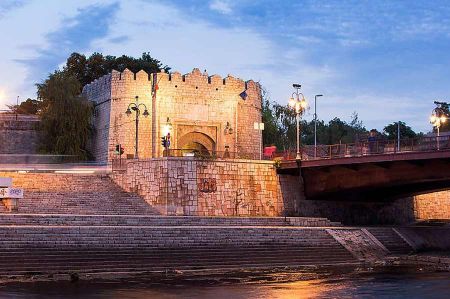 During the Ottoman rule, Niš was one of the most important cities in European Turkey, even the seat of a pasha with an associated vilayet. When the Serbs wanted to get rid of Ottoman rule through uprisings between 1804 and 1813, Niš was briefly brought under Serbian control, but could not be held during the subsequent siege by the Ottomans due to ammunition shortages. On May 31, 1809, over 1,000 insurgents blew themselves up with the remaining ammunition, whereupon the Ottomans built the so-called Skull Tower (Ćele Kula) as a warning for the future, in which the skulls of 1,836 fallen warriors were walled up. To this day, the Skull Tower is a national monument for the Serbs.
During the Ottoman rule, Niš was one of the most important cities in European Turkey, even the seat of a pasha with an associated vilayet. When the Serbs wanted to get rid of Ottoman rule through uprisings between 1804 and 1813, Niš was briefly brought under Serbian control, but could not be held during the subsequent siege by the Ottomans due to ammunition shortages. On May 31, 1809, over 1,000 insurgents blew themselves up with the remaining ammunition, whereupon the Ottomans built the so-called Skull Tower (Ćele Kula) as a warning for the future, in which the skulls of 1,836 fallen warriors were walled up. To this day, the Skull Tower is a national monument for the Serbs.
Excavations are currently being carried out again in the Mediana district, with important Roman finds being discovered directly in the city centre.
Niš in Serbia – Historic City on the Nišava
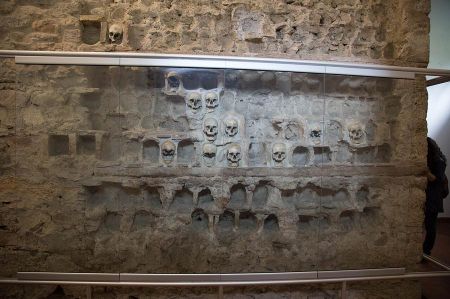 Niš, one of the oldest cities in Europe, is located in southern Serbia on the banks of the Nišava River. This historic city was an important centre of the Roman Empire, played a key role during the Ottoman Empire, and is today a vibrant metropolis with a fascinating blend of history, culture, and modern urban life.
Niš, one of the oldest cities in Europe, is located in southern Serbia on the banks of the Nišava River. This historic city was an important centre of the Roman Empire, played a key role during the Ottoman Empire, and is today a vibrant metropolis with a fascinating blend of history, culture, and modern urban life.
From Roman ruins to medieval fortresses and moving memorials, Niš is a place that uniquely combines past and present. In this blog, we delve deep into the history, sights, and cultural significance of this impressive city.
The History of Niš – A Journey Through Time Through Millennia
Niš was already settled in ancient times and has a turbulent history full of conquests, destruction, and reconstruction.
1. Roman Era – The Birthplace of Emperor Constantine the Great
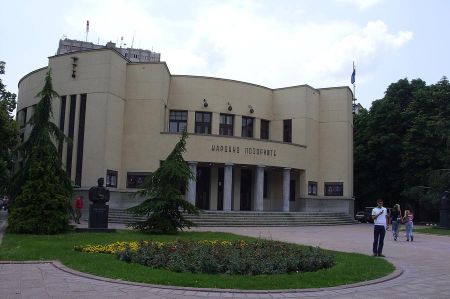 Niš, known as Naissus, was one of the most important cities of the Roman Empire. It is particularly famous as the birthplace of Emperor Constantine the Great (272 AD), the ruler who legitimized Christianity in the Roman Empire.
Niš, known as Naissus, was one of the most important cities of the Roman Empire. It is particularly famous as the birthplace of Emperor Constantine the Great (272 AD), the ruler who legitimized Christianity in the Roman Empire.
Roman remains worth seeing in Niš:
Mediana – An ancient Roman villa with impressive mosaics and baths.
Roman Fortress Ruins – Traces of the old city walls from the Roman period.
2. Middle Ages and Ottoman Rule
After the fall of the Roman Empire, Niš was conquered by various peoples – including the Byzantines, Slavs, and Bulgarians. In the 15th century, the city fell under Ottoman rule, which lasted for almost 500 years.
Some of the city's most important buildings date from this period:
Niš Fortress – One of the best-preserved Ottoman fortresses in the Balkans.
⚔ The Skull Tower (Ćele Kula) – A unique monument from the Serbian uprisings against the Ottomans.
3. 20th Century – Wars and Resistance
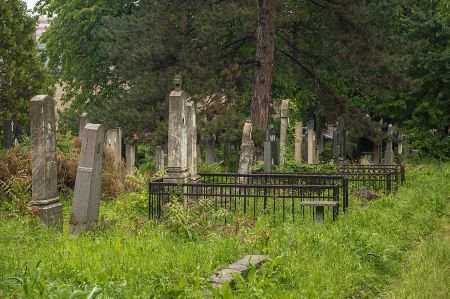 Niš played an important role in both World Wars. During World War II, the city was occupied by Nazi Germany, but partisan resistance was strong. Today, the Red Cross Concentration Camp commemorates the tragic events of that time.
Niš played an important role in both World Wars. During World War II, the city was occupied by Nazi Germany, but partisan resistance was strong. Today, the Red Cross Concentration Camp commemorates the tragic events of that time.
Sights in Niš – The City Highlights
Niš offers a wealth of historical sites, lively markets, and cultural hotspots. Here are the top attractions:
1. Niš Fortress – A City Icon
Located in the heart of the city, the Niš Fortress was built on the remains of a Roman and medieval fortress. Today, it is a popular meeting place with cafes, galleries, and an amphitheatre for events.
2. Skull Tower (Ćele Kula) – A Monument to Resistance
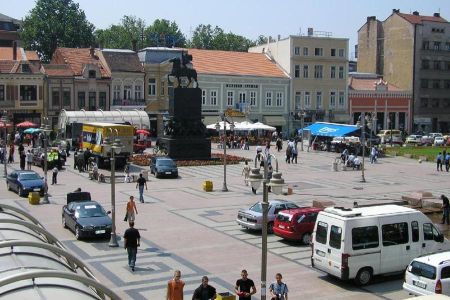 This monument is one of the most impressive and harrowing symbols of the Serbian struggle for freedom. It was constructed from the skulls of Serbian rebels who fought against the Ottomans in the First Serbian Uprising.
This monument is one of the most impressive and harrowing symbols of the Serbian struggle for freedom. It was constructed from the skulls of Serbian rebels who fought against the Ottomans in the First Serbian Uprising.
3. Mediana – Experience Roman Heritage Up Close
This archaeological site features the remains of a luxurious Roman palace with well-preserved mosaics and thermal baths – a must-see for history buffs.
4. The Red Cross Concentration Camp – A Dark Chapter in History
This former concentration camp commemorates the horrors of World War II and features a deeply moving exhibition about the victims of the Nazi regime.
5. The Nišava Promenade – The Modern Face of the City
Along the Nišava River, you'll find a lively atmosphere with many restaurants, bars, and cafes – ideal for enjoying Serbian city life.
Culture and Cuisine in Niš – A Feast for the Senses
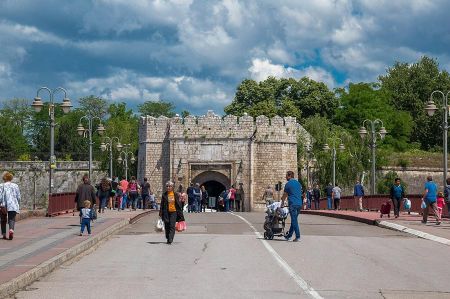 Niš is known not only for its history, but also for its vibrant culture and delicious cuisine.
Niš is known not only for its history, but also for its vibrant culture and delicious cuisine.
1. Music and Festivals in Niš
Nišville Jazz Festival – One of the largest jazz festivals in Southeast Europe.
Film and Theatre Festivals – Niš has a strong arts scene with regular events.
2. Serbian Specialties from Niš
Ćevapi – Grilled minced meat rolls, often served with flatbread.
Leskovački roštilj – Famous grilled dishes from the region.
Prebranac – A hearty bean stew.
Serbian rakija – A traditional fruit brandy, often homemade.
Best time to visit and tips for Niš visitors
 ✔ Best time to visit: Spring (April–June) and autumn (September–October) are ideal for sightseeing.
✔ Best time to visit: Spring (April–June) and autumn (September–October) are ideal for sightseeing.
✔ Getting there: Niš has an international airport with connections to many European cities.
✔ Accommodation: From boutique hotels to budget hostels, there are numerous accommodation options.
Conclusion – Why you should visit Niš
Niš is a city with a rich history, impressive sights, and warm hospitality. Here you can follow in the footsteps of the Romans, discover fascinating medieval buildings, and enjoy authentic Serbian life.
Whether you're a history buff, culture enthusiast, or foodie, Niš has something for everyone. Plan your next city trip to Serbia and discover the magic of this historic city on the Nišava River!
Have you ever been to Niš? Share your experience in the comments!
Coordinates: 43° 19′ N, 21° 54′ E Coordinates: 43° 19′ 28″ N, 21° 54′ 18″ E
Please also read:
Morovic - small town on Bosut and Studva in Serbia
Belgrade - The strategic importance of the fortress
-
 Nis in Serbia - ancient historical City
Nis in Serbia - ancient historical City
Nis in Serbia - ancient historical City
Nis in Serbia - ancient historical City
-
 Nis in Serbia - ancient historical City
Nis in Serbia - ancient historical City
Nis in Serbia - ancient historical City
Nis in Serbia - ancient historical City
-
 Nis in Serbia - ancient historical City
Nis in Serbia - ancient historical City
Nis in Serbia - ancient historical City
Nis in Serbia - ancient historical City
-
 Nis in Serbia - ancient historical City
Nis in Serbia - ancient historical City
Nis in Serbia - ancient historical City
Nis in Serbia - ancient historical City
-
 Nis in Serbia - ancient historical City
Nis in Serbia - ancient historical City
Nis in Serbia - ancient historical City
Nis in Serbia - ancient historical City
-
 Nis in Serbia - ancient historical City
Nis in Serbia - ancient historical City
Nis in Serbia - ancient historical City
Nis in Serbia - ancient historical City
https://www.alaturka.info/en/serbia/nis-serbia/6303-nis-in-serbia-historic-city-on-the-nisava#sigProId49af6f0117
